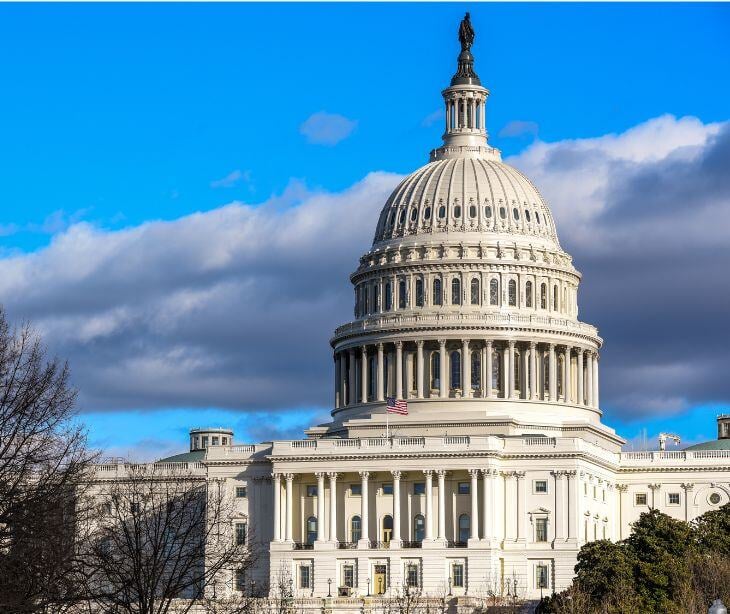2 min read
Senate budget for 2025 reveals massive fiscal changes
Kirsten Peremore
Feb 17, 2025 6:55:05 PM

On February 7, 2025, Senator Lindsey Graham (R-South Carolina), Chairman of the U.S. Senate Budget Committee, released the Fiscal Year (FY) 2025 Budget Resolution.
What happened
The resolution serves as a blueprint for a reconciliation bill to address policy priorities, including border security, military revitalization, energy independence, and fiscal responsibility. The resolution proposes allocating funds to complete the U.S.-Mexico border wall, enhance border surveillance technology, expand detention capacity, and increase staffing for immigration enforcement by hiring more ICE officers, Border Patrol agents, immigration judges, and assistant U.S. attorneys.
It includes provisions to increase defense spending, strengthen the U.S. Navy and missile defense systems, and overhaul the nuclear defense posture. The resolution also promotes energy independence by expanding onshore and offshore energy leases and eliminating the methane emissions fee imposed by the Biden administration.
To ensure fiscal responsibility, the resolution pairs the proposed $85.5 billion increase in annual spending with equivalent spending reductions over four years. The Senate Budget Committee has approved this resolution, marking a step toward implementation, though House Republicans are advancing a separate budget framework that includes tax cuts and additional spending reductions.
The reconciliation process will require alignment between the House and Senate to finalize a unified budget plan that aligns with President Donald Trump's policy objectives.
Going deeper: Understanding the budget specifics
- The Senate FY 2025 budget resolution proposes $85.5 billion in annual spending, fully offset by corresponding cuts.
- The House budget resolution calls for increasing the debt ceiling by $4 trillion and allows for $4.5 trillion in tax cuts.
- The House allocates $200 billion for border and defense spending.
- It instructs seven committees to achieve at least $1.502 trillion in mandatory spending cuts over ten years.
- The House resolution mandates a minimum of $880 billion in cuts to health care programs, primarily affecting Medicaid.
- The Senate resolution includes caps on new spending, such as $150 billion for Armed Services and $90 billion for Homeland Security.
- Both resolutions include reconciliation instructions for committees to propose measures that could increase or decrease deficits over the FY 2025–2034 period.
What was said
Senator Graham said, “To those who voted for and support real border security and a stronger defense in a troubled world, help is on the way. This budget resolution jumpstarts a process that will give President Trump’s team the money they need to secure the border and deport criminals, and make America strong and more energy independent.”
Why it matters
There are both positives and negatives for healthcare organizations to the proposed budget. The increase in the Health Resources and Services Administration (HRSA) budget to $16.3 billion includes substantial investment in maternal health and mental health services which could expand access to care. These benefits are contrasted with potential cuts to health programs like Medicaid, which create challenges for healthcare providers that rely on these funds to deliver services.
Related: HIPAA Compliant Email: The Definitive Guide
FAQs
What are the most common HIPAA compliance issues that healthcare organizations face?
Common issues include failing to conduct security risk analyses, lacking adequate security controls, insufficient device security protections, not performing vendor due diligence, having outdated HIPAA policies and procedures.
Why is conducting a Security Risk Analysis so important for HIPAA compliance?
A Security Risk Analysis identifies gaps and vulnerabilities in an organization's security practices, which is a HIPAA requirement that must be conducted annually or whenever there are changes to business operations.
How do political dynamics affect data privacy legislation?
Political dynamics can significantly influence the development and enforcement of data privacy laws, as differing party ideologies may prioritize consumer protection differently or seek to limit regulatory burdens on businesses.




%20-%202024-10-31T163819.341.jpg)